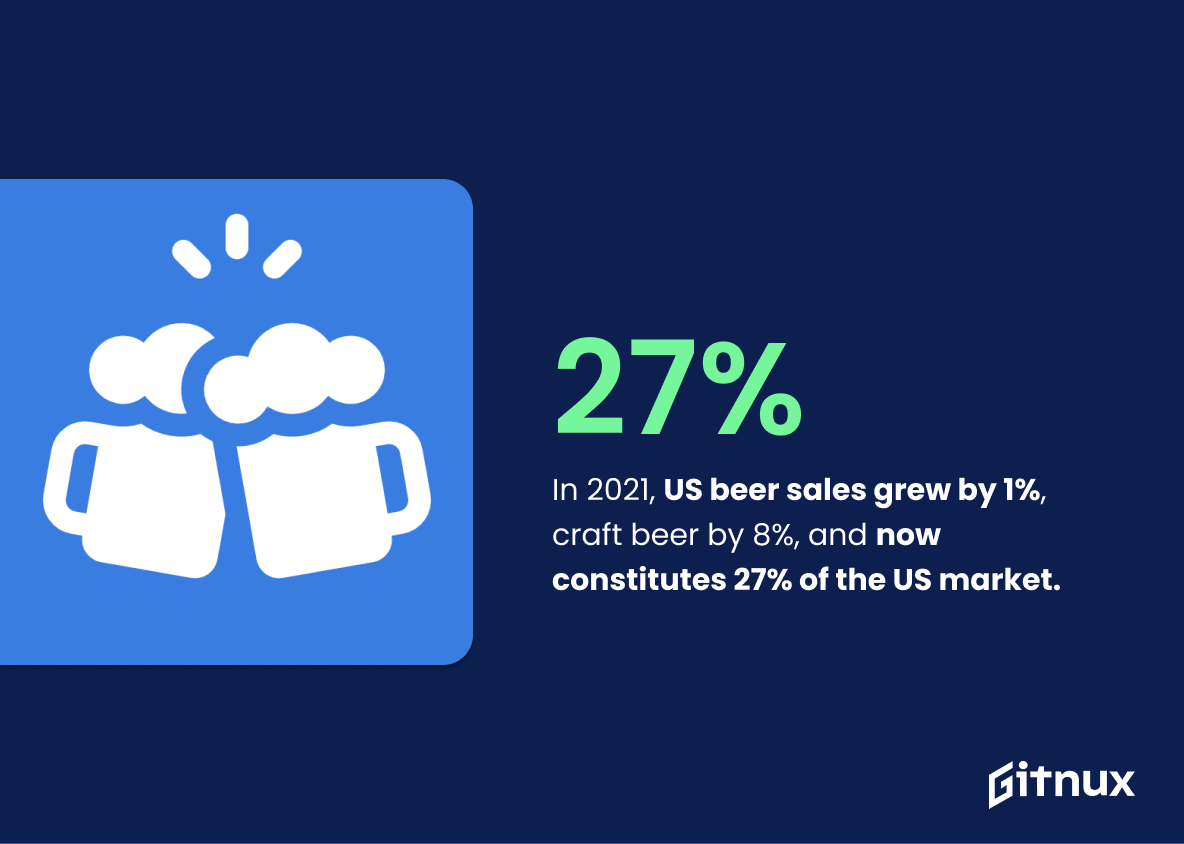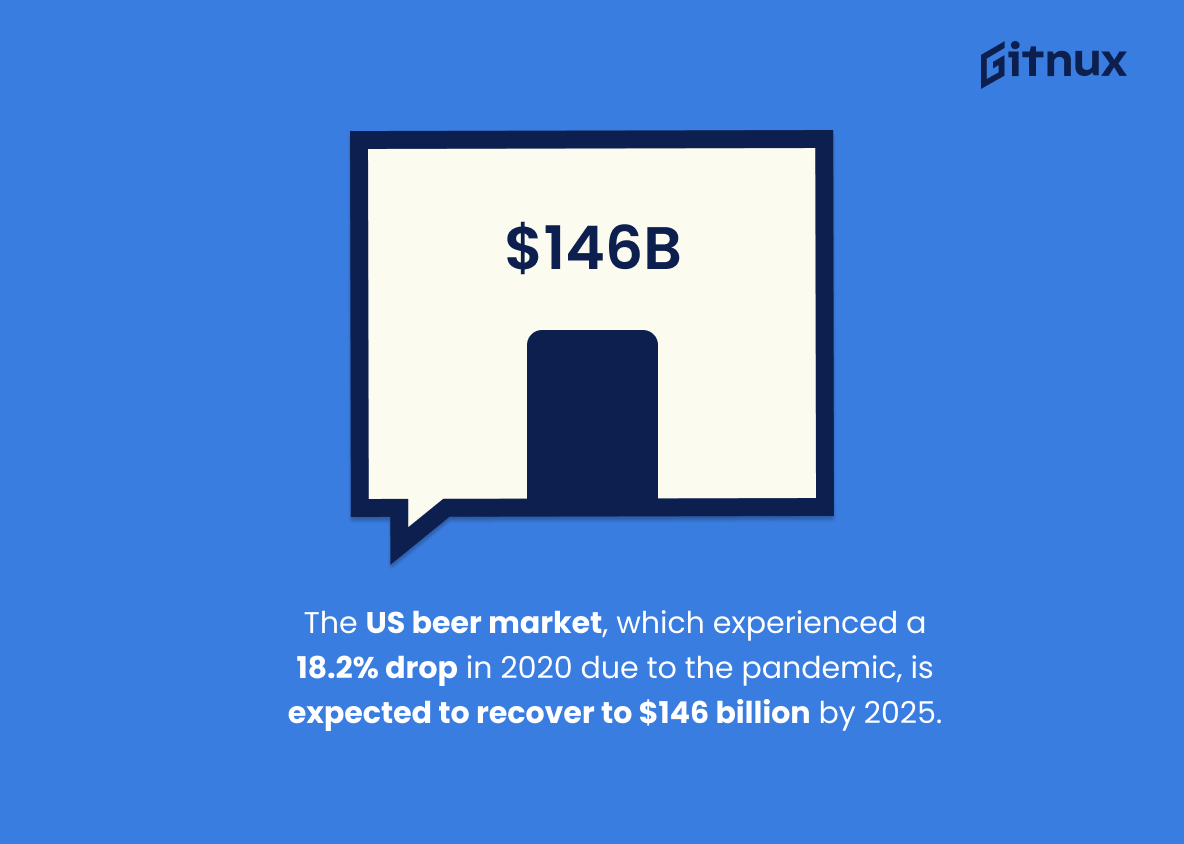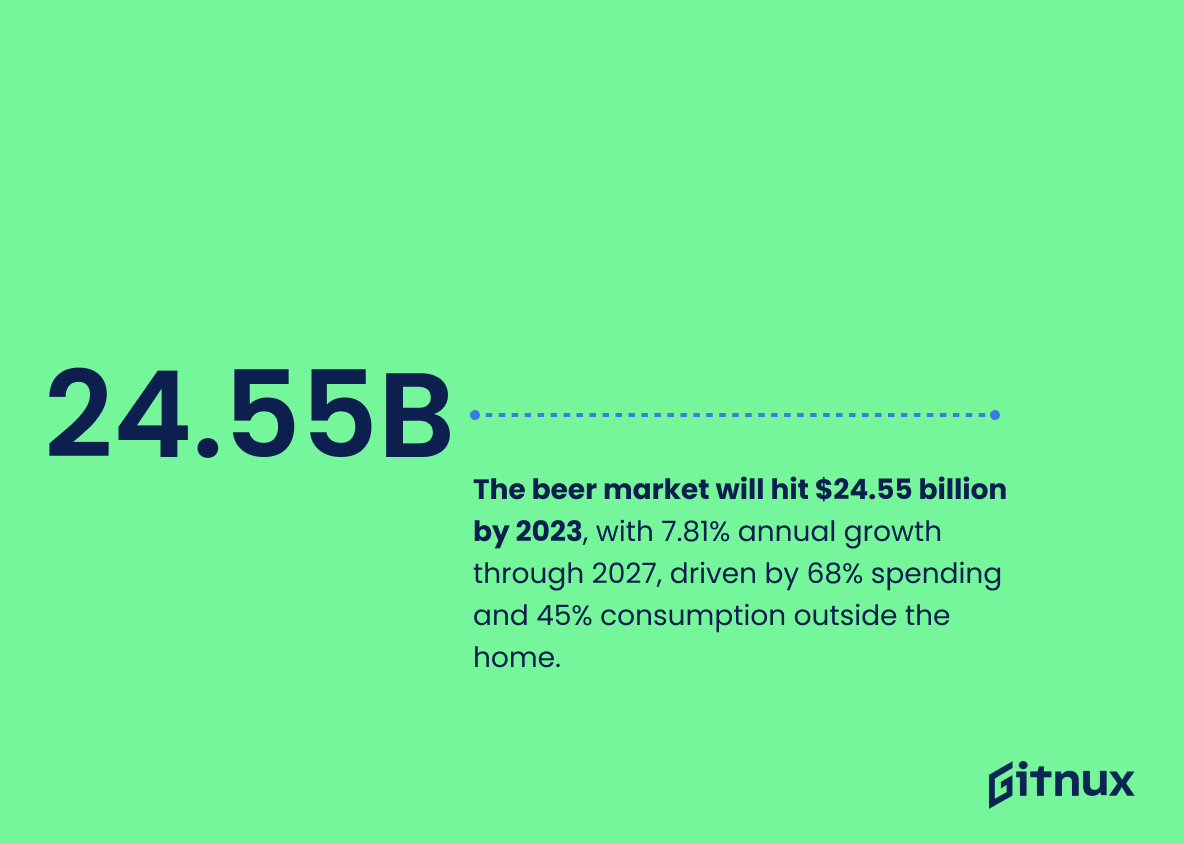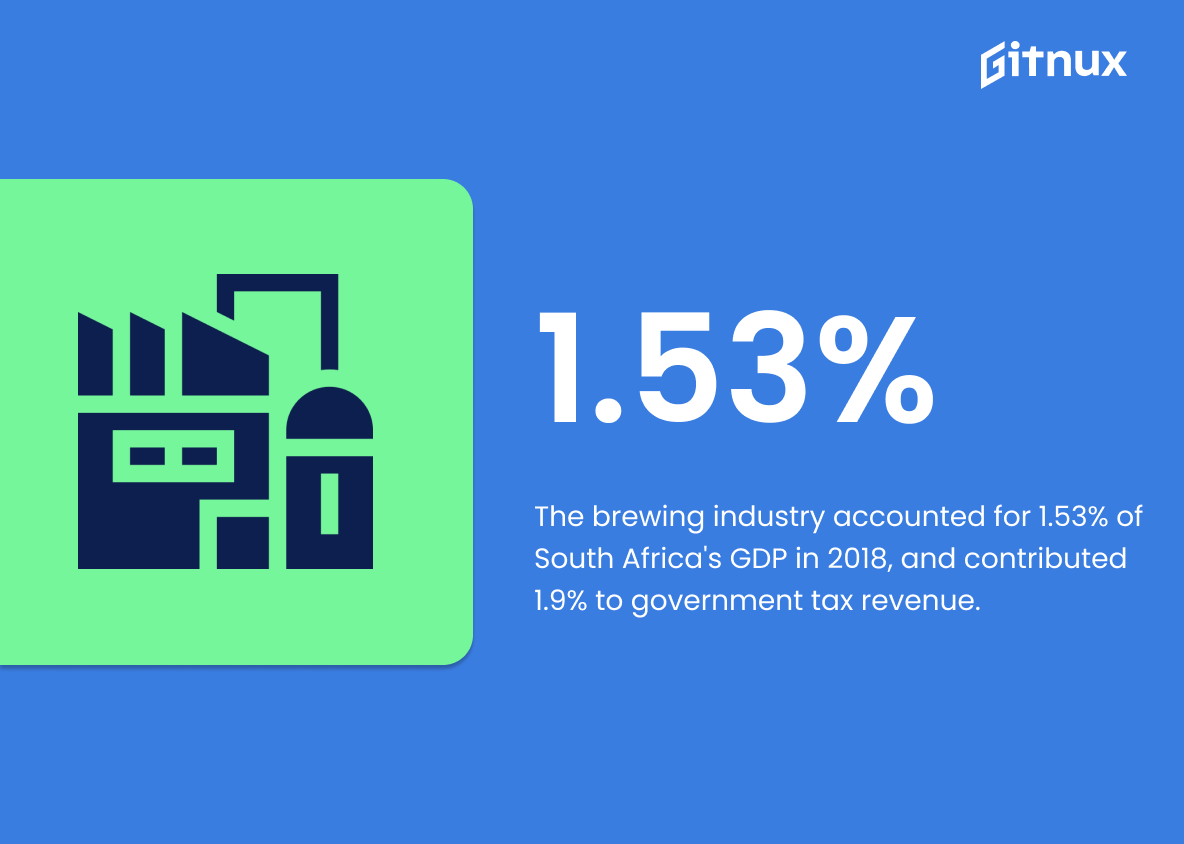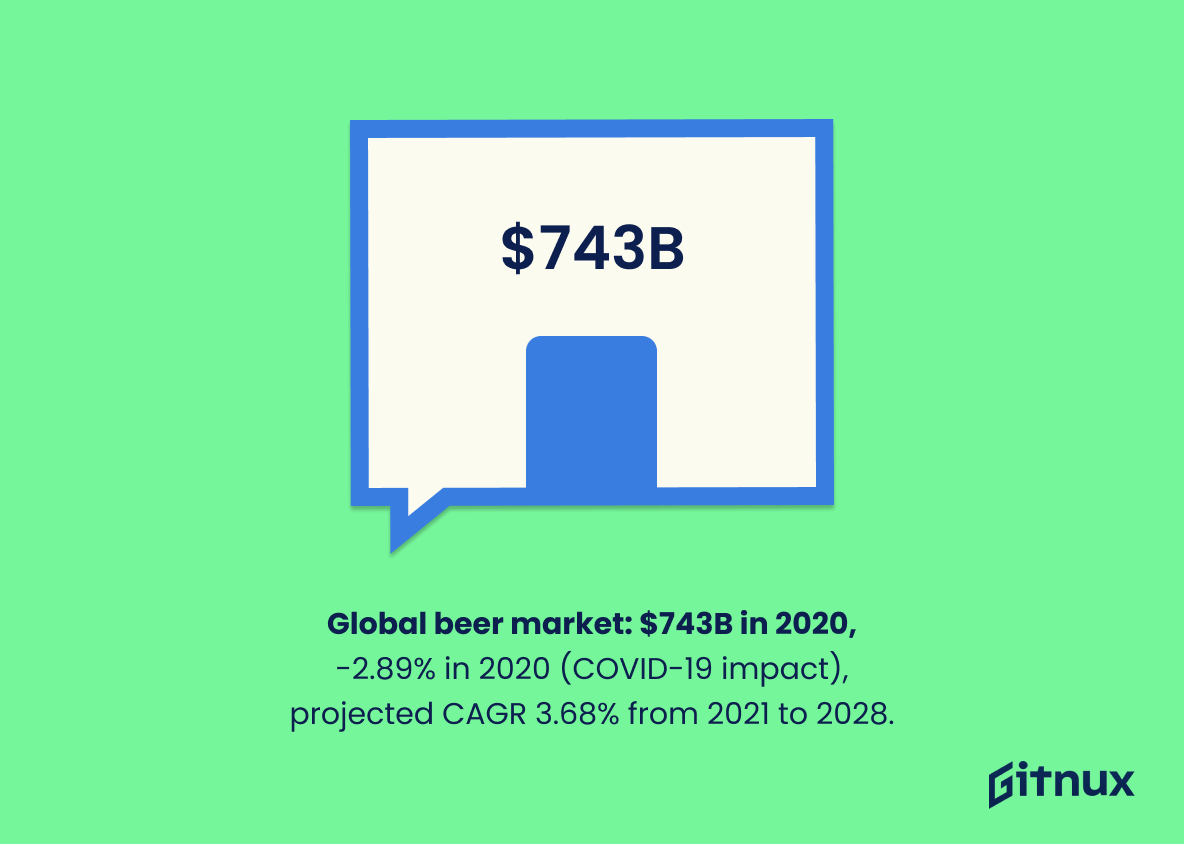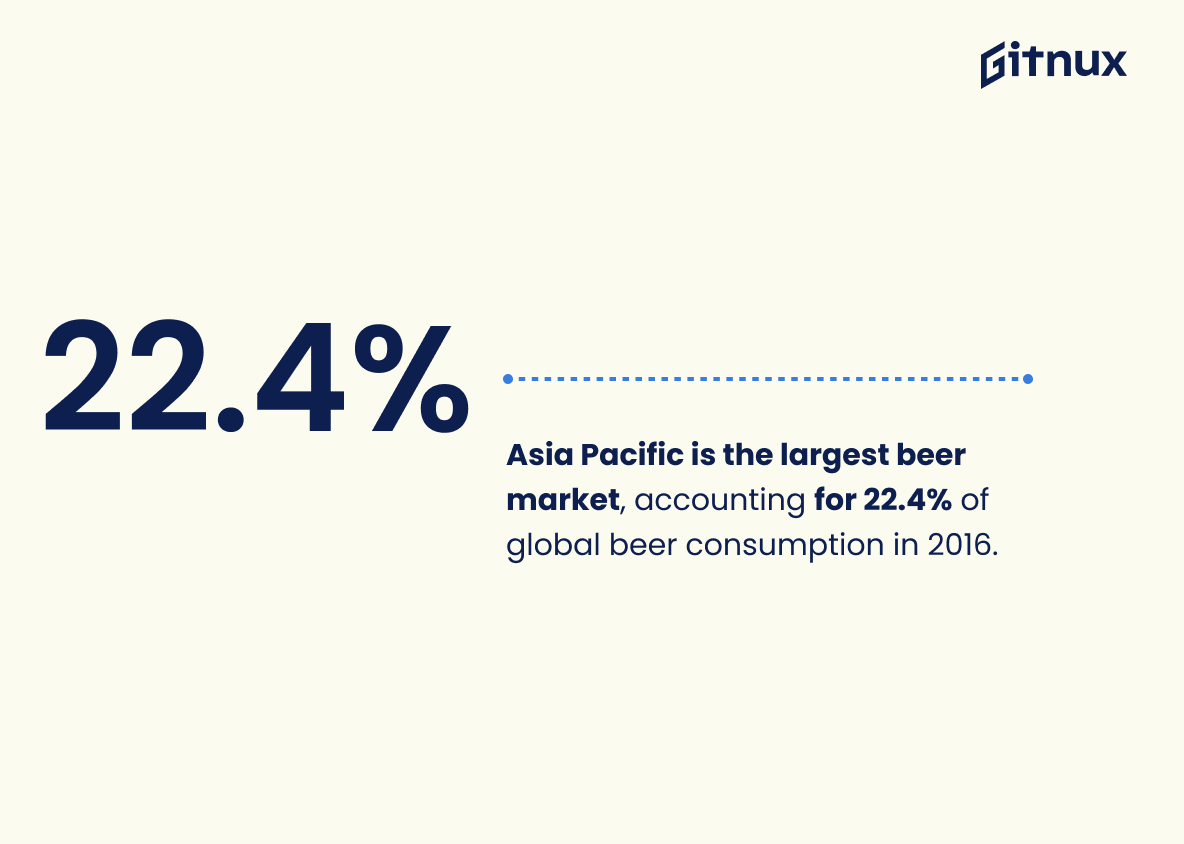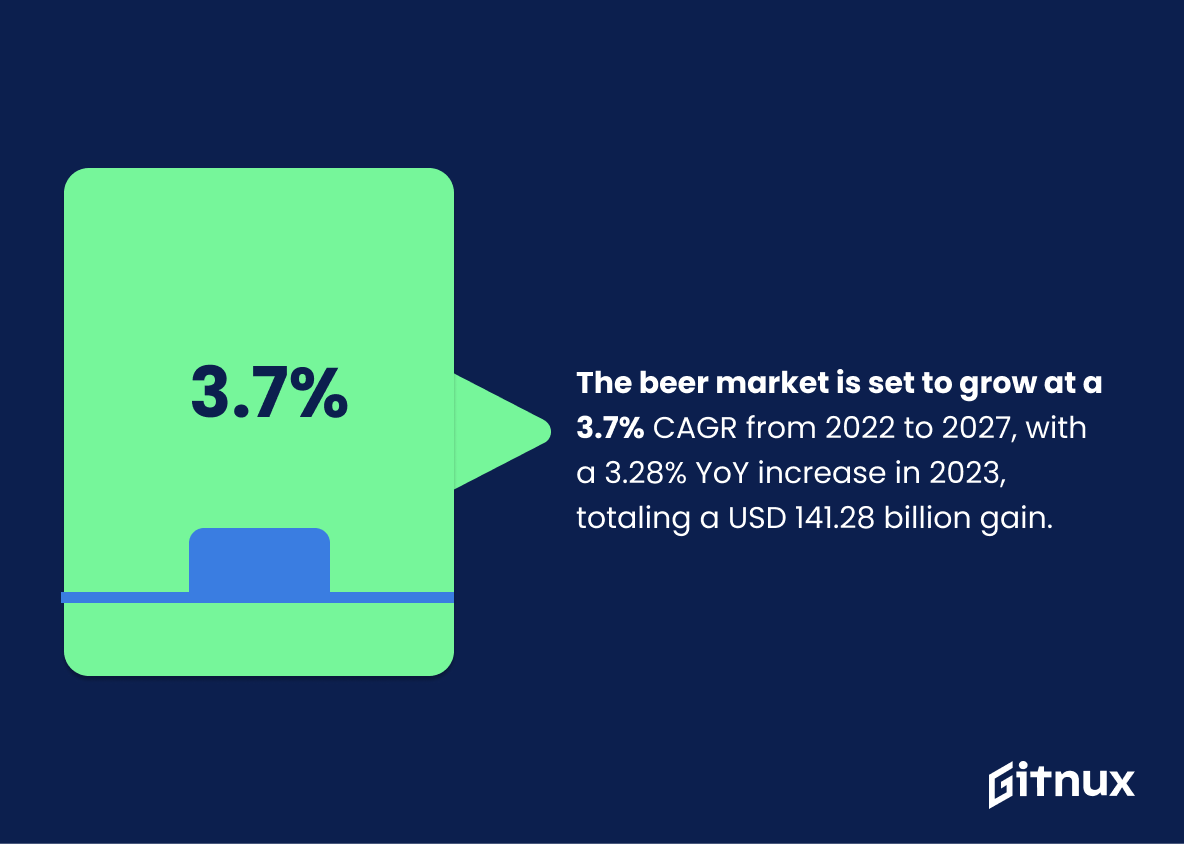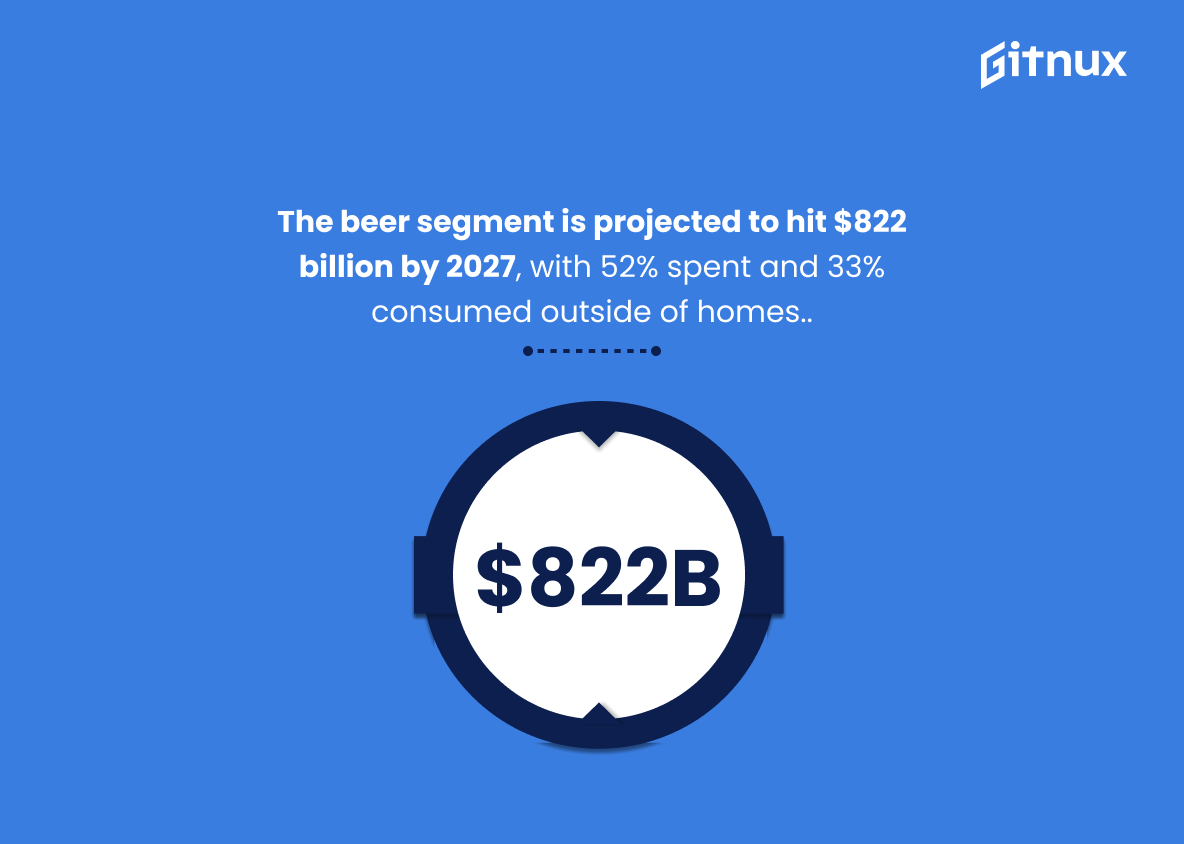Welcome to our blog post about beer industry statistics. Beer is one of the most popular drinks in the world and is enjoyed by people of all ages. It’s no surprise that the beer industry is a multi-billion dollar industry, with many different players in the market. In this article, we will explore some of the most interesting and surprising statistics about the beer industry.
We’ll look at the size of the industry, the most popular beer brands, and the impact of the craft beer movement. We’ll also discuss the economic impact of the beer industry and the environmental impact of beer production.
Beer Industry: Most Important Statistics
South Africa is the 12th largest consumer of beer in the world, accounting for 1.8% of total global beer consumption and 30% of the formal African beer market.
The global beer market size was $743 billion in 2020 and is projected to grow at a CAGR of 3.68% from 2021 to 2028, despite a decrease of 2.89% in 2020 due to the Covid-19 pandemic.
Beer Industry: Statistics Overview
Beer volume sales in the US increased by 1% and craft beer by 8% in 2021, with retail dollar sales increasing by 21%, resulting in craft beer now accounting for 27% of the US beer market.
Craft beer is becoming increasingly popular and that the US beer market is growing. This could be due to the increased availability of craft beer, as well as the changing tastes of consumers.
This could have a positive impact on the beer industry, as craft beer is often seen as a higher quality product and could lead to increased sales and profits.
The US beer market decreased by 18.2% from 2019 to 2020 due to the pandemic, but is expected to reach pre-pandemic levels by 2023 and be valued at 146 billion dollars by 2025.
This statistic is important because it shows the impact of the pandemic on the beer industry in the US and the projected growth of the industry in the coming years.
It also provides insight into the future of the industry, which can help businesses plan and prepare for the future.
The beer segment of the market is expected to reach a revenue of $24.55 billion in 2023 and grow annually by 7.81% until 2027, with 68% of spending and 45% of consumption being out-of-home consumption.
This is an indication of the current and future size of the market, as well as the expected growth rate. It also provides insight into the type of consumption that is driving the market, which can help inform marketing and product strategies.
The craft beer industry in the UK is expected to be worth £1.4bn in 2023, with a 2.6% increase from 2018, despite a 1.1% annual decline in the same period.
It shows that the industry is still growing despite a decline in the market size, indicating that the craft beer industry is resilient and has potential for further growth.
This information can be used to inform decisions about investments in the craft beer industry and to plan for future growth.
South Africa is the 12th largest consumer of beer in the world, accounting for 1.8% of total global beer consumption and 30% of the formal African beer market.
This is important because it shows the size and scope of the beer industry in South Africa and Africa as a whole.
The beer industry contributed 1.53% of South Africa’s GDP in 2018, supported 1.4% of national employment between 2015 and 2018 and accounted for 1.9% of the government’s total tax haul in 2018/19.
This is important because it shows the significant contribution the beer industry makes to the South African economy and the impact it has on employment and government revenue.
The global beer market size was $743 billion in 2020 and is projected to grow at a CAGR of 3.68% from 2021 to 2028, despite a decrease of 2.89% in 2020 due to the Covid-19 pandemic.
This statistic is important for understanding the current state of the beer industry and the potential for growth in the future.
It shows that despite the pandemic, the industry is still expected to grow in the coming years, indicating that it is resilient and has potential for further growth.
Asia Pacific is the largest beer market, accounting for 22.4% of global beer consumption in 2016.
The Asia Pacific region is the most important market for beer producers, with China, Japan, and India being the largest consumers. This information can be used to inform decisions about where to focus marketing efforts and where to invest in production.
The beer market is estimated to grow at a CAGR of 3.7% between 2022 and 2027, with a 3.28% year-over-year growth in 2023, and is forecast to increase by USD 141.28 billion.
This provides insight into the projected growth of the beer market over the next five years. This information can be used by businesses in the beer industry to plan for future investments and develop strategies to capitalize on the expected growth.
The beer segment is expected to reach $822 billion in revenue by 2027, with 52% of spending and 33% of volume consumption attributable to out-of-home consumption.
This statistic is important for the beer industry as it shows the potential growth of the market and the importance of out-of-home consumption. This information can be used to inform marketing strategies and help businesses plan for the future.
Conclusion
In conclusion, the beer industry is a thriving and ever-changing industry. With the rise of craft beer, the industry is constantly evolving and growing.
The statistics show that the beer industry is a multi-billion dollar industry and is expected to continue to grow in the coming years. With the increasing demand for craft beer, the industry is sure to continue to be a major player in the global economy.
References
1 – https://www.brewersassociation.org/statistics-and-data/national-beer-stats/
2 – https://www.statista.com/forecasts/944461/total-beer-market-size-in-the-us
3 – https://www.statista.com/outlook/cmo/alcoholic-drinks/beer/united-kingdom
4 – https://www.ibisworld.com/united-kingdom/market-size/craft-beer-production/
5 – https://blog.drinktec.com/beer/south-african-beer-industry/
6 – https://beersa.org/about-us/
7 – https://www.fortunebusinessinsights.com/beer-market-102489
8 – https://straitsresearch.com/report/global-beer-market
9 – https://www.technavio.com/report/beer-market-industry-analysis
10 – https://www.statista.com/outlook/cmo/alcoholic-drinks/beer/worldwide#:~:text=The%20market%20is%20expected%20to,%2C%20in%20bars%20and%20restaurants).
